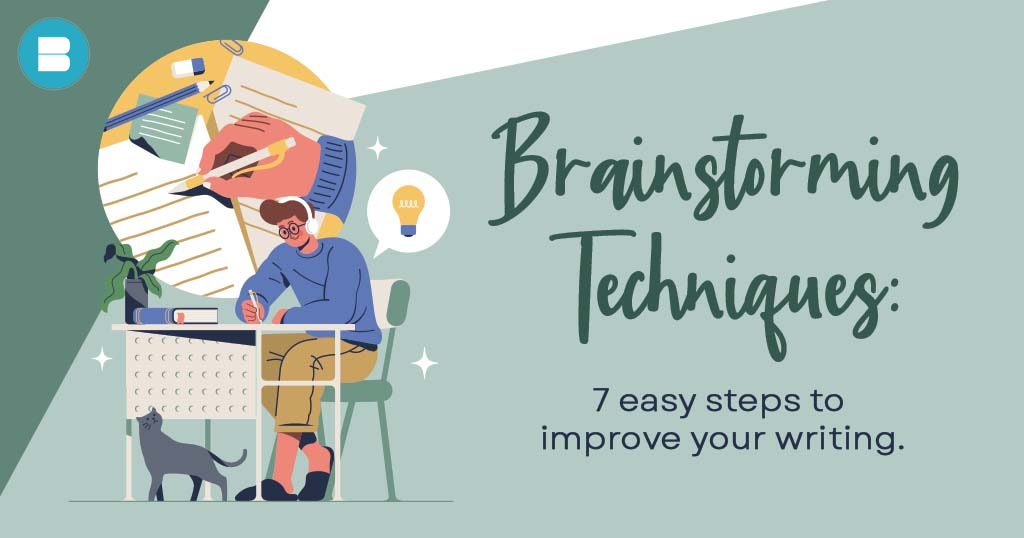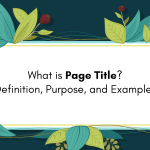When it comes to writing, whether it’s an academic essay, a creative piece, or even a blog post, brainstorming is a vital step in the process. Brainstorming allows you to generate ideas, organise your thoughts, and unleash your creativity. In this blog post, we will explore the importance of brainstorming in writing and present seven easy steps to help you enhance your brainstorming techniques.
Importance of Brainstorming in Writing:
It involves generating a multitude of ideas, concepts, and perspectives related to a specific topic or writing task. The process allows writers to explore different angles, uncover connections, and organise their thoughts before diving into the actual writing phase. Here are some key reasons why brainstorming is essential in writing:
- Idea Generation: Brainstorming provides a platform for generating a wide range of ideas. It encourages free thinking and creativity, allowing writers to explore various possibilities and perspectives. By brainstorming, writers can tap into their imagination and come up with unique and engaging concepts for their writing.
- Organisation and Structure: Brainstorming helps writers organise their thoughts and ideas. By jotting down key points, creating outlines, or using visual aids like mind maps, writers can structure their content and ensure a logical flow. This organisation lays the foundation for a well-structured and coherent piece of writing.
- Overcoming Writer’s Block: Writer’s block is a common challenge that writers face. Brainstorming can be an effective tool to overcome this block. By actively engaging in the generation of ideas, writers can break through mental barriers, stimulate their creativity, and find inspiration to start their writing process.
- Exploration of Different Perspectives: Brainstorming encourages writers to consider different viewpoints and perspectives. It allows for a comprehensive examination of a topic, helping writers to present a well-rounded and balanced view in their writing. By exploring multiple perspectives, writers can also anticipate and address potential counterarguments, making their writing more persuasive and credible.
- Content Focus and Relevance: Brainstorming helps writers stay focused on the main topic or theme of their writing. It enables them to filter out irrelevant or tangential ideas and select those that are most relevant and aligned with the intended message or purpose of their writing. This focus ensures that the writing remains concise, coherent, and effective in conveying the intended message.
- Stimulating Creativity: Brainstorming is a creative process that allows writers to think outside the box. It encourages the exploration of unconventional ideas, innovative solutions, and unique approaches to writing. By pushing the boundaries of traditional thinking, writers can inject fresh perspectives and creativity into their work, making it more engaging and captivating for readers.
- Collaborative Opportunities: Brainstorming can be a collaborative process, especially in group or team settings. It allows writers to share ideas, build upon each other’s thoughts, and collectively contribute to the development of the writing project. Collaborative brainstorming sessions foster a supportive and interactive environment, leading to diverse perspectives and enriched content.
Now, let’s delve into the seven easy steps to improving your brainstorming techniques:
- Step 1: Choose a Suitable Environment
Choosing a suitable environment is essential for effective brainstorming. Find a quiet and comfortable space where you can concentrate without distractions. This could be a coffee shop, library, or a peaceful corner of your home. Creating a conducive environment helps you enter a focused and creative mindset, enabling better idea generation. Having all the necessary writing materials, such as pens, paper, or a laptop, readily available ensures you can capture and organize your thoughts efficiently. - Step 2: Define Your Writing Goal
Defining your writing goal is crucial to guiding your brainstorming process. Clearly articulate the purpose of your writing. Are you aiming to inform, persuade, entertain, or achieve a specific outcome? Understanding your objective helps you stay focused during brainstorming and filter out irrelevant ideas. It provides a clear direction for your writing and ensures that your ideas align with your desired outcome. - Step 3: Conduct Preliminary Research
Before diving into brainstorming, conduct preliminary research on your topic. Read relevant articles, books, or online resources to gain a basic understanding of the subject matter. This research helps you familiarise yourself with different perspectives, key concepts, and existing knowledge. It provides a foundation to build upon during brainstorming and helps you generate more informed and well-rounded ideas. - Step 4: Generate Ideas Freely
In this step, let your creativity flow and generate ideas freely. Jot down any thoughts, concepts, or arguments that come to mind, regardless of how unconventional or insignificant they may seem. Use techniques like mind maps, bullet points, or free-writing to explore different angles and potential connections. The goal is to capture a wide range of ideas, without judgment or self-censorship. Embrace quantity over quality at this stage, as it allows for more diverse and innovative ideas. - Step 5: Organise and Prioritise Ideas
Once you have generated a pool of ideas, it’s time to organise and prioritise them. Review your list and identify common themes, connections, or sub-topics that emerge. Group related ideas together to create a sense of coherence. This step helps you see the bigger picture and organise your thoughts in a logical structure. Prioritise the most relevant and compelling ideas that align with your writing goal. This will form the foundation of your writing piece. - Step 6: Expand on Ideas
With your ideas organised, it’s time to expand on each one. Take each sub-topic or idea and develop supporting arguments, examples, or evidence. Dive deeper into the details, providing explanations or illustrating your points with relevant information. This step adds depth and substance to your writing, making it more engaging, informative, and persuasive. Consider different perspectives and potential counterarguments to strengthen your ideas further. - Step 7: Refine and Select the Best Ideas
In the final step, refine and select the best ideas to include in your writing. Critically evaluate each idea, considering its relevance, strength, and alignment with your writing goal. Remove any redundant or weak ideas that may dilute the impact of your writing. Aim for clarity, conciseness, and cohesion. Select the most compelling and persuasive ideas that form a coherent and well-structured narrative. This process of refinement ensures that your writing is focused, impactful, and effectively conveys your intended message to the audience.
Conclusion:
Brainstorming is a valuable tool in the writing process, enabling you to generate ideas, organise your thoughts, and unleash your creativity. By following the seven easy steps outlined above, you can enhance your brainstorming techniques and produce well-crafted pieces of writing. Embrace the power of brainstorming and watch your ideas flourish on the page.
Happy writing!
















